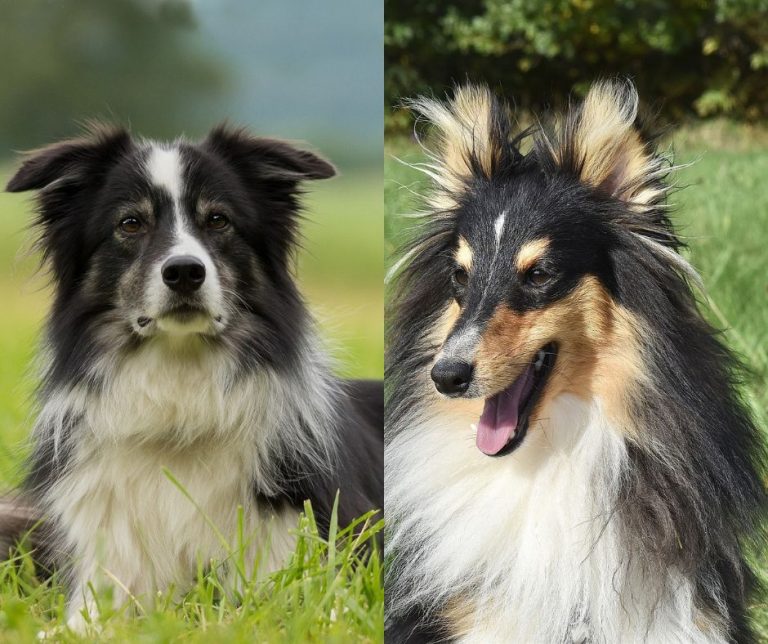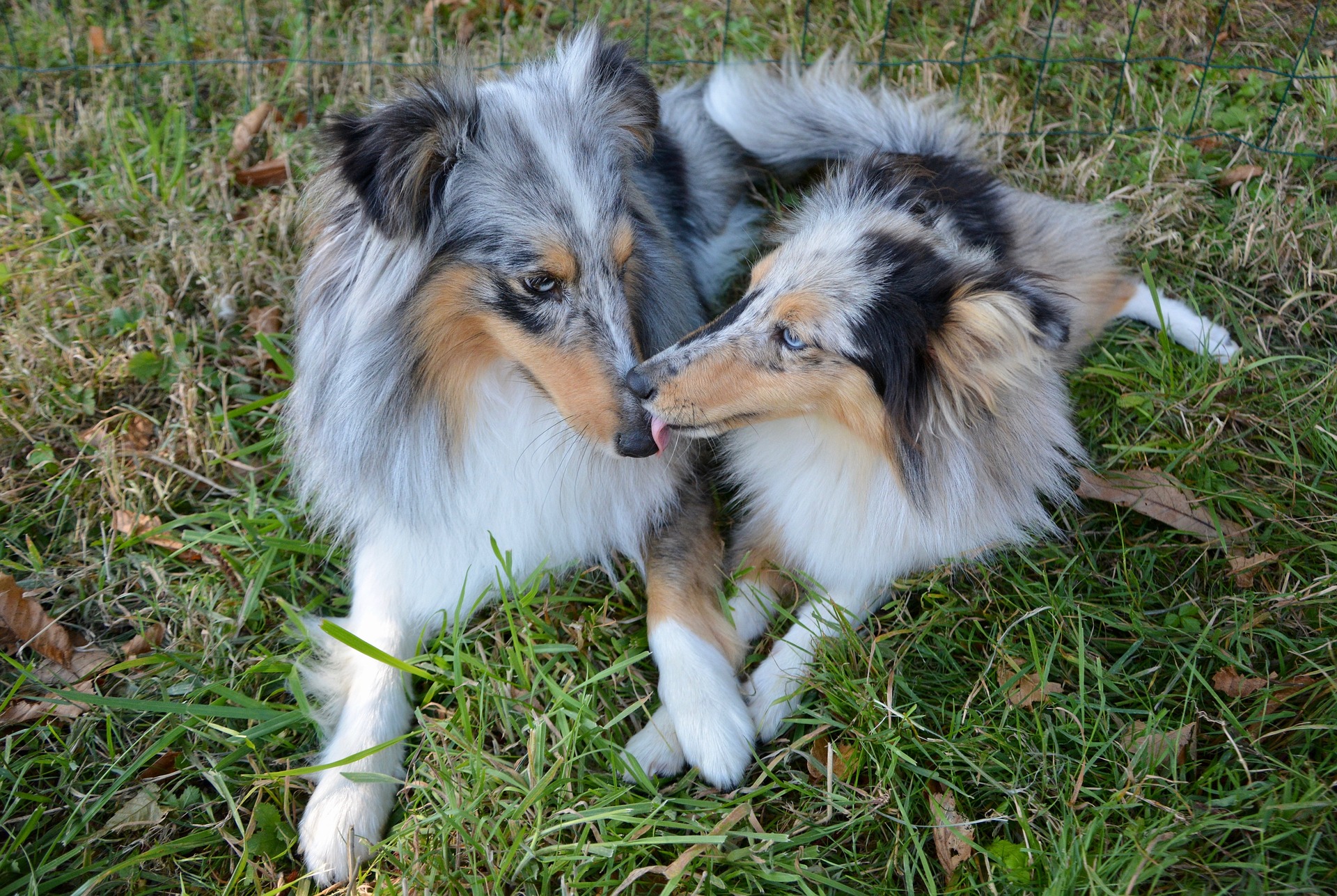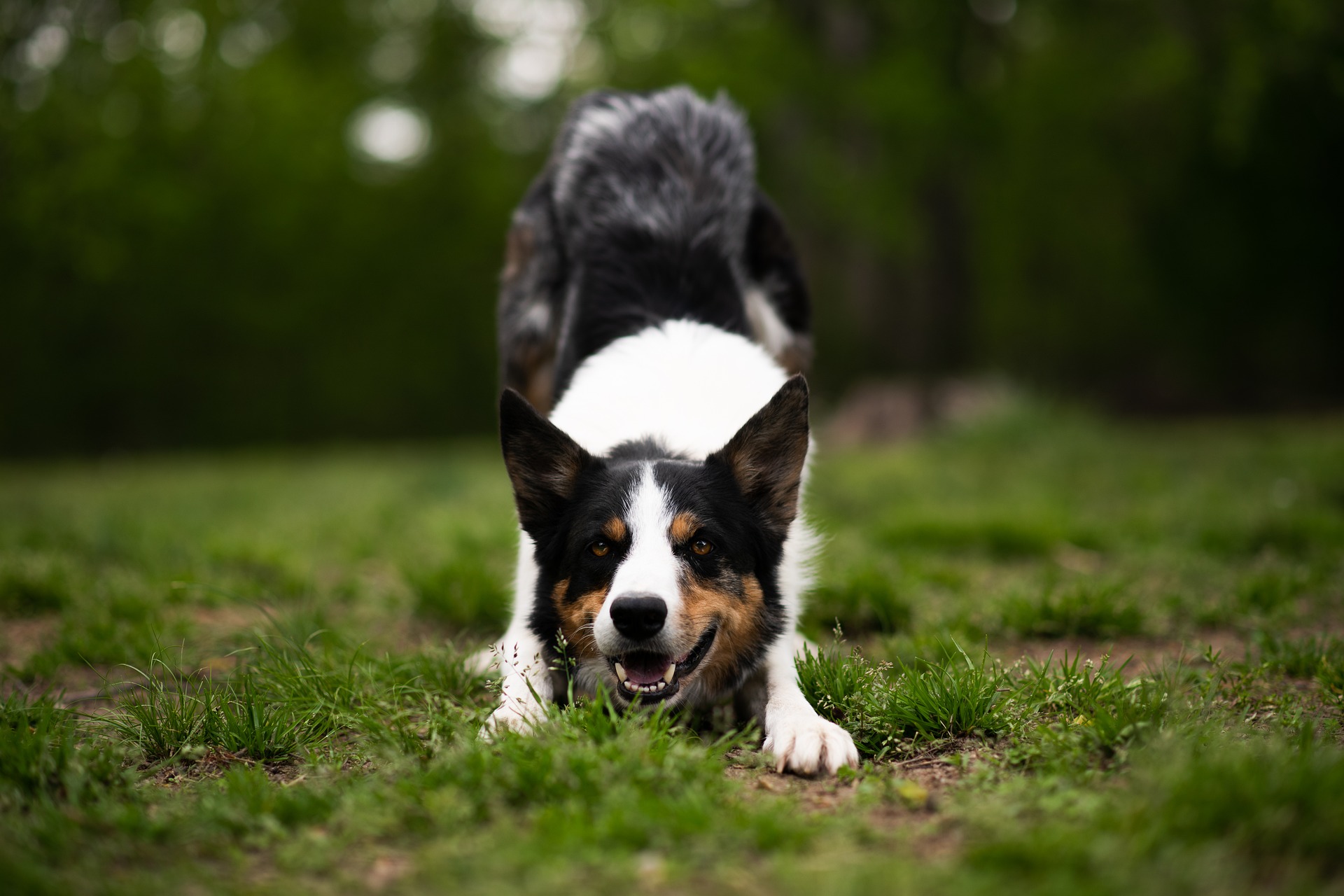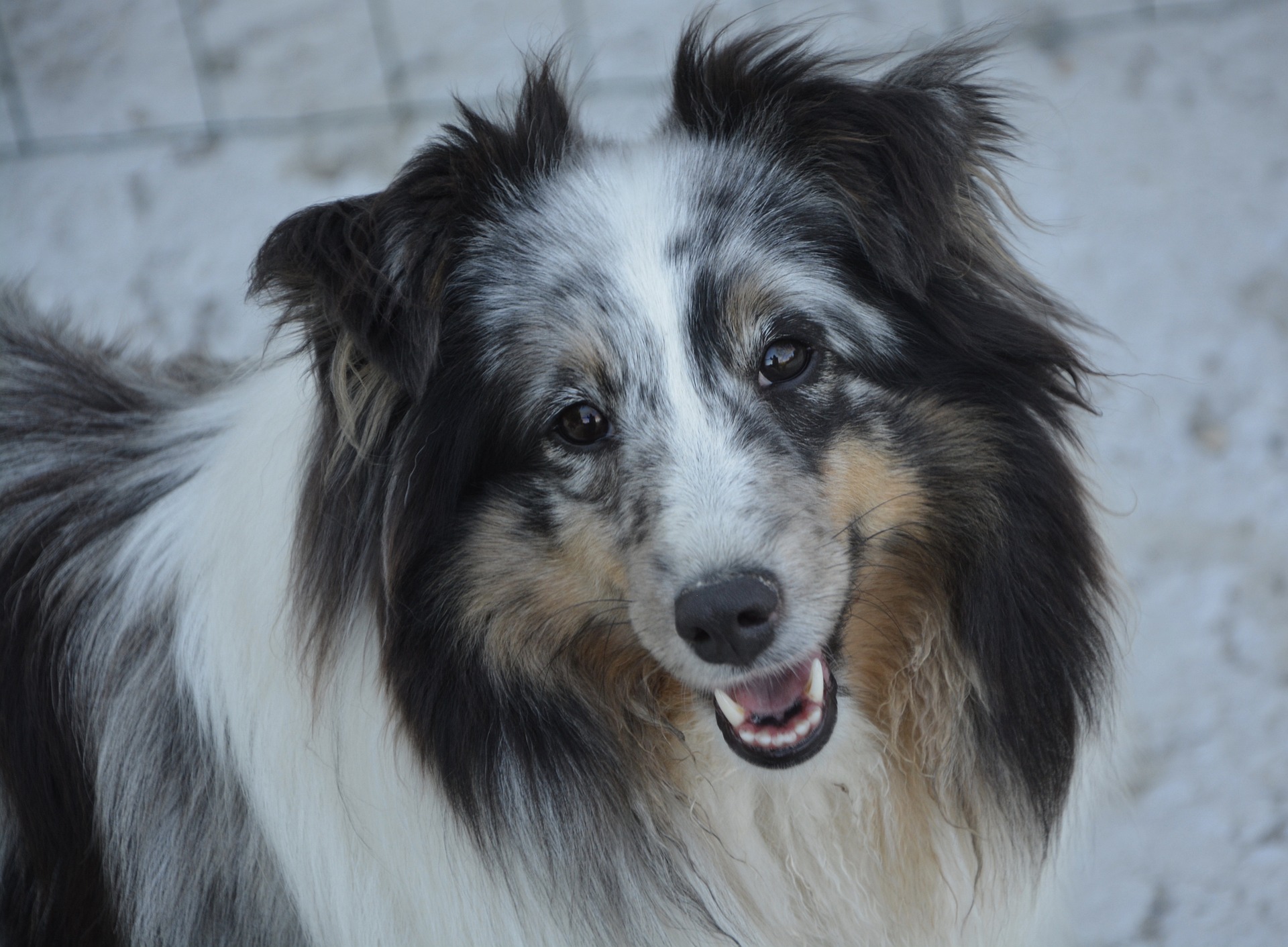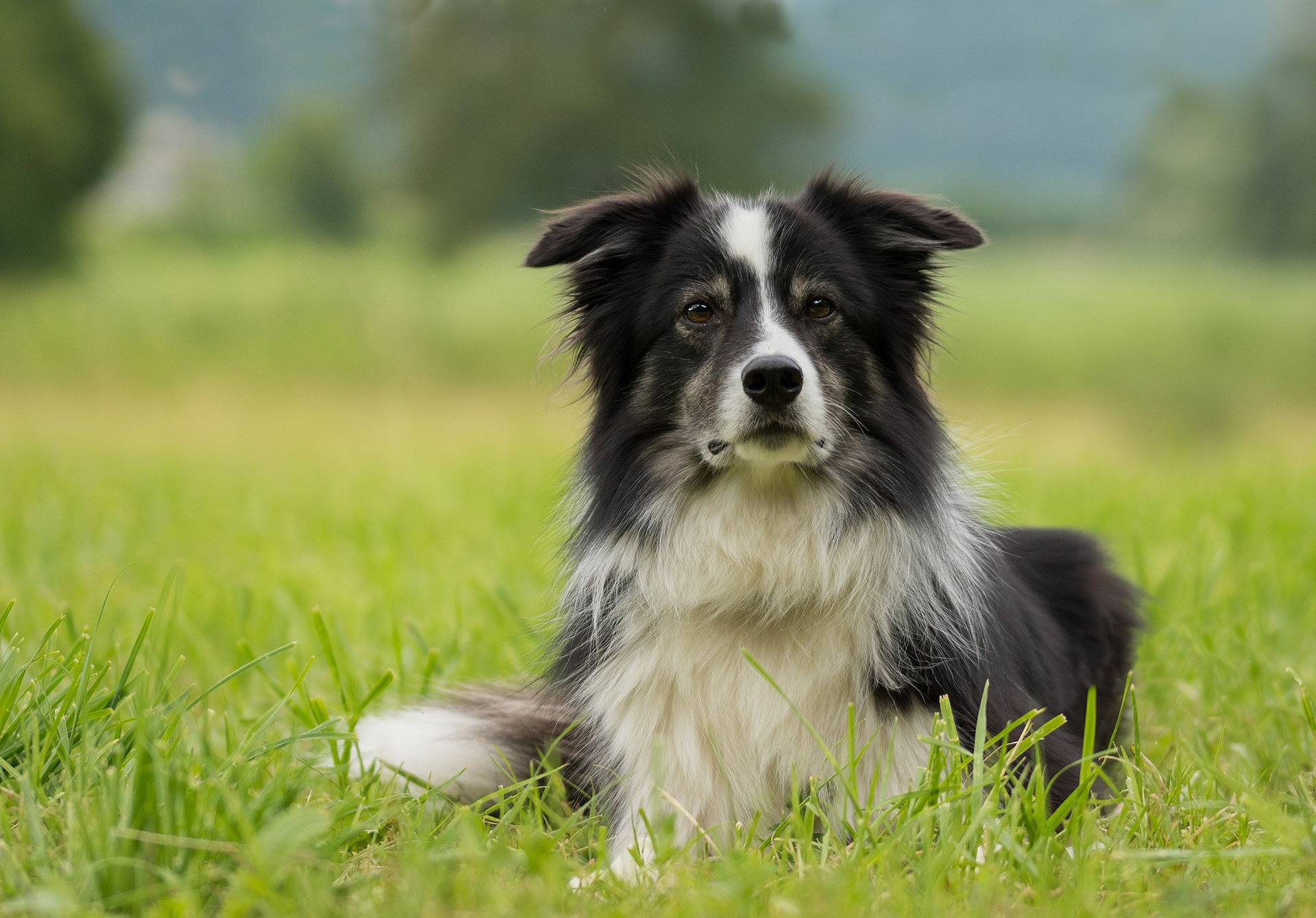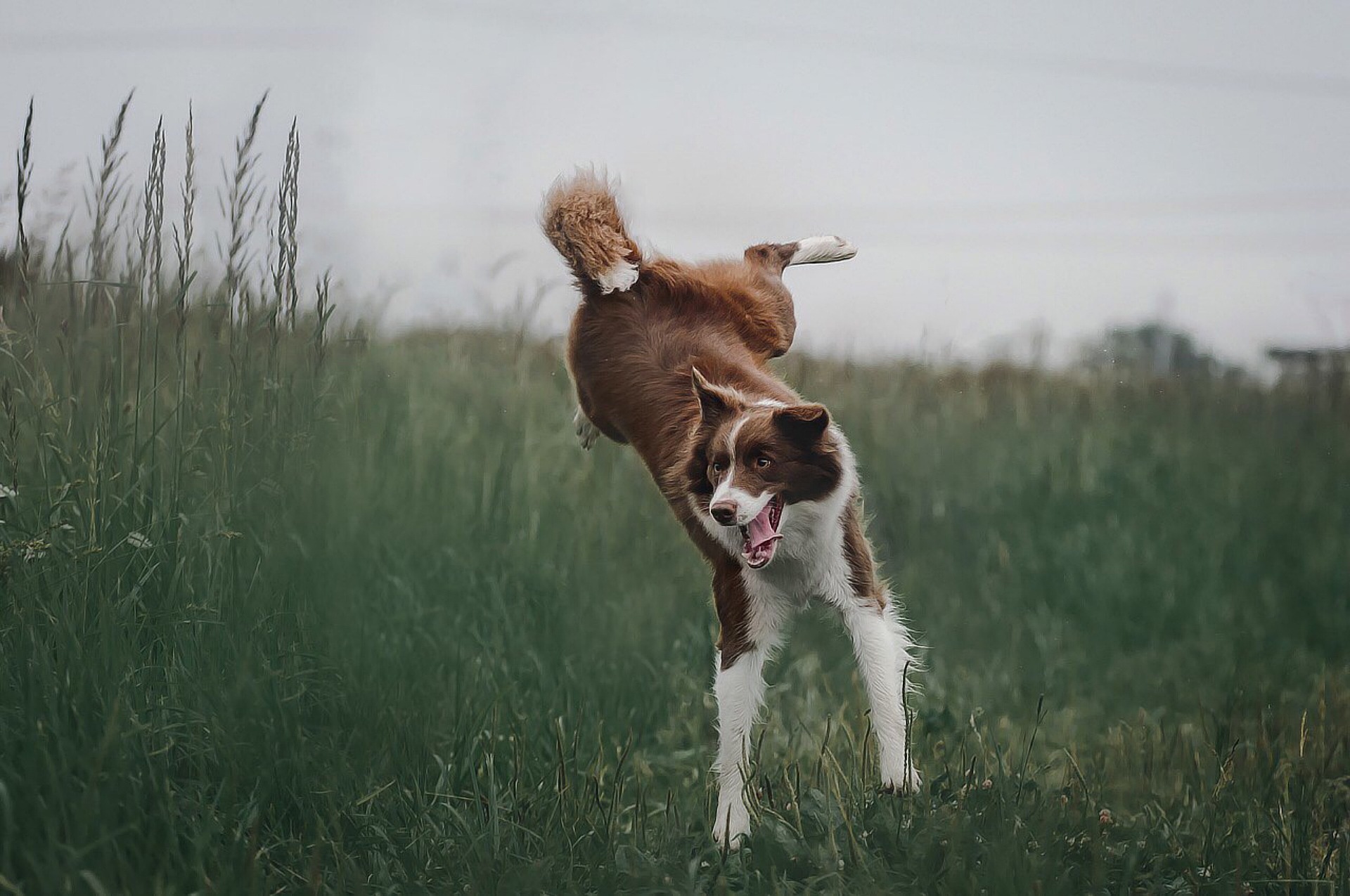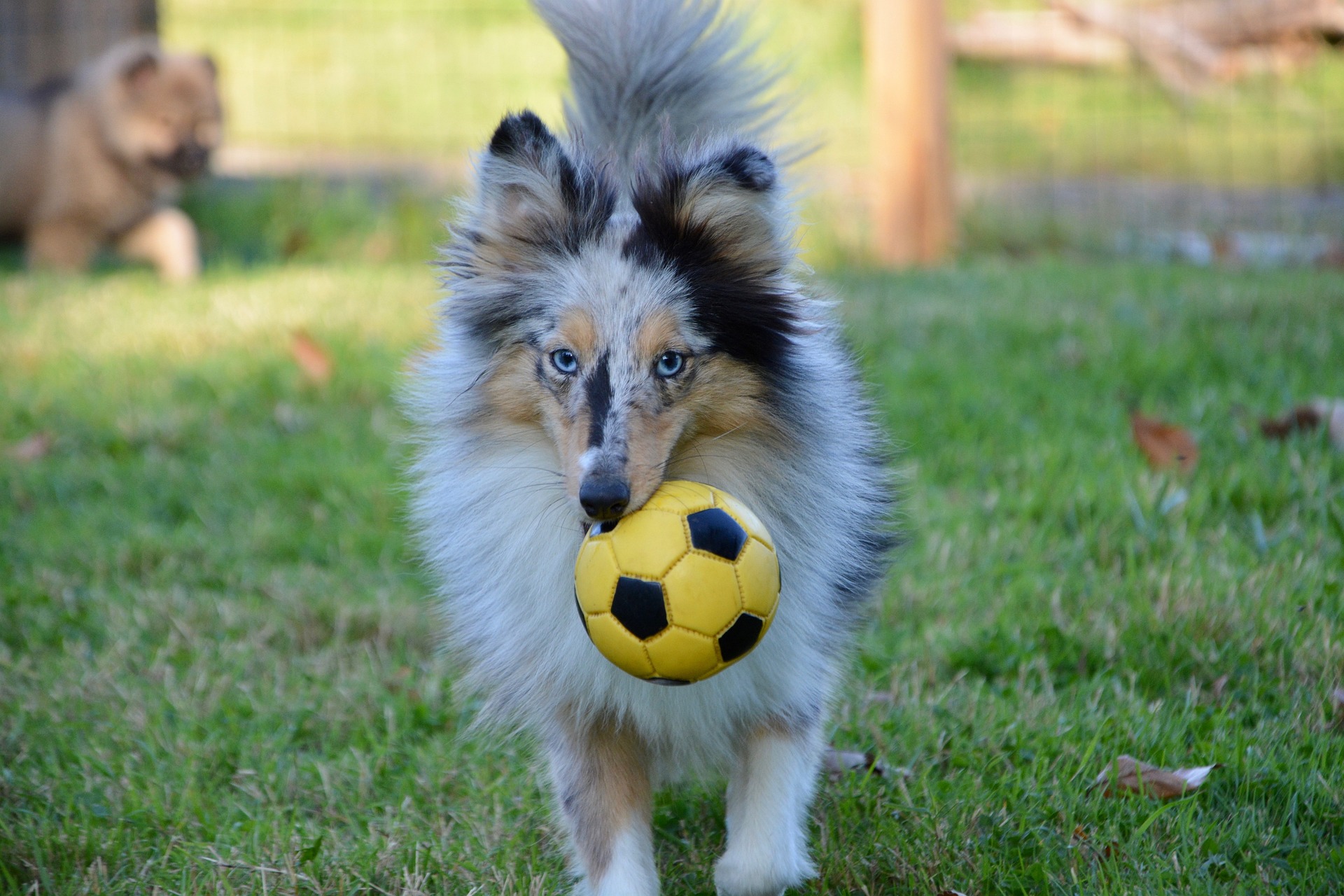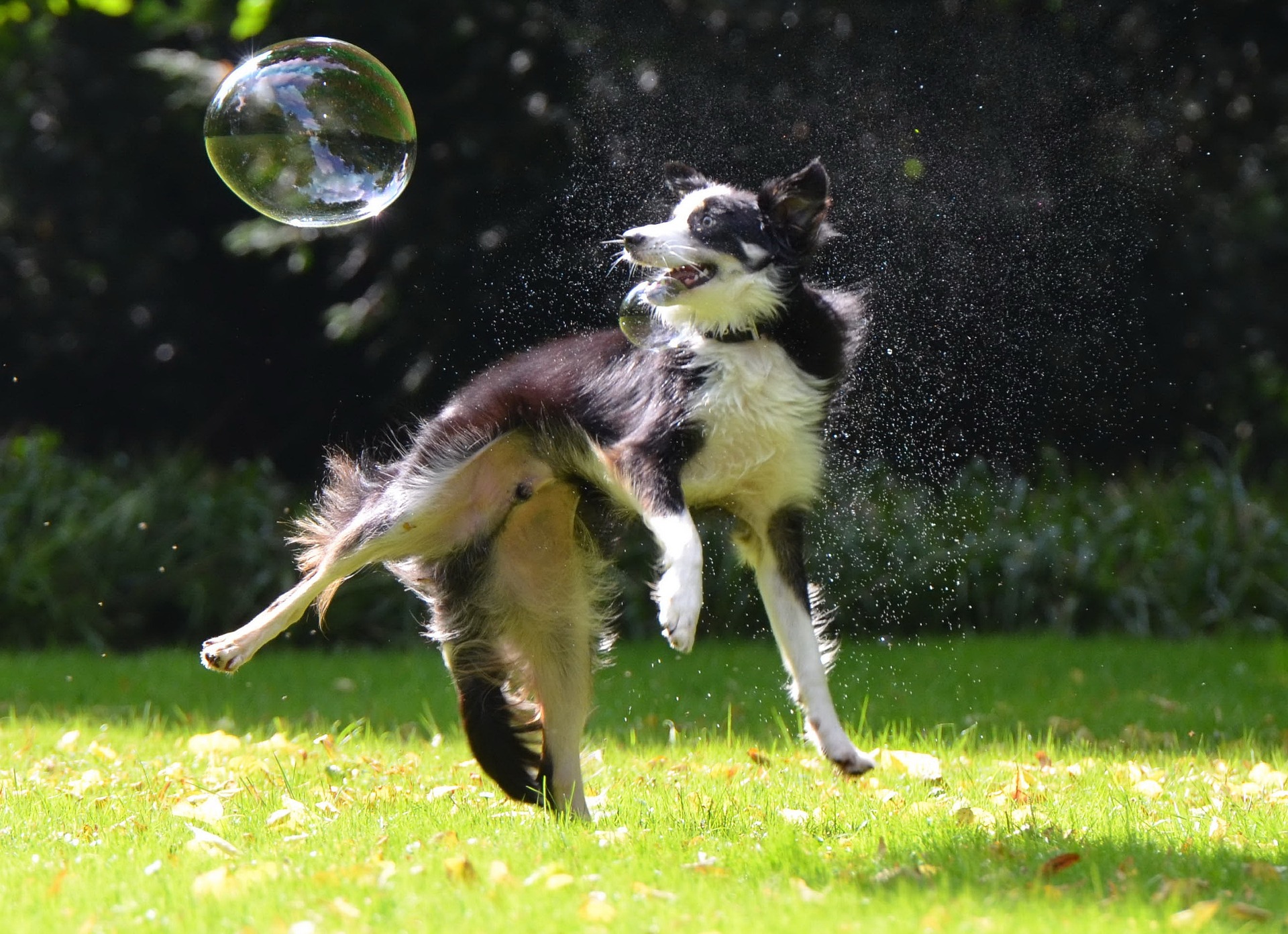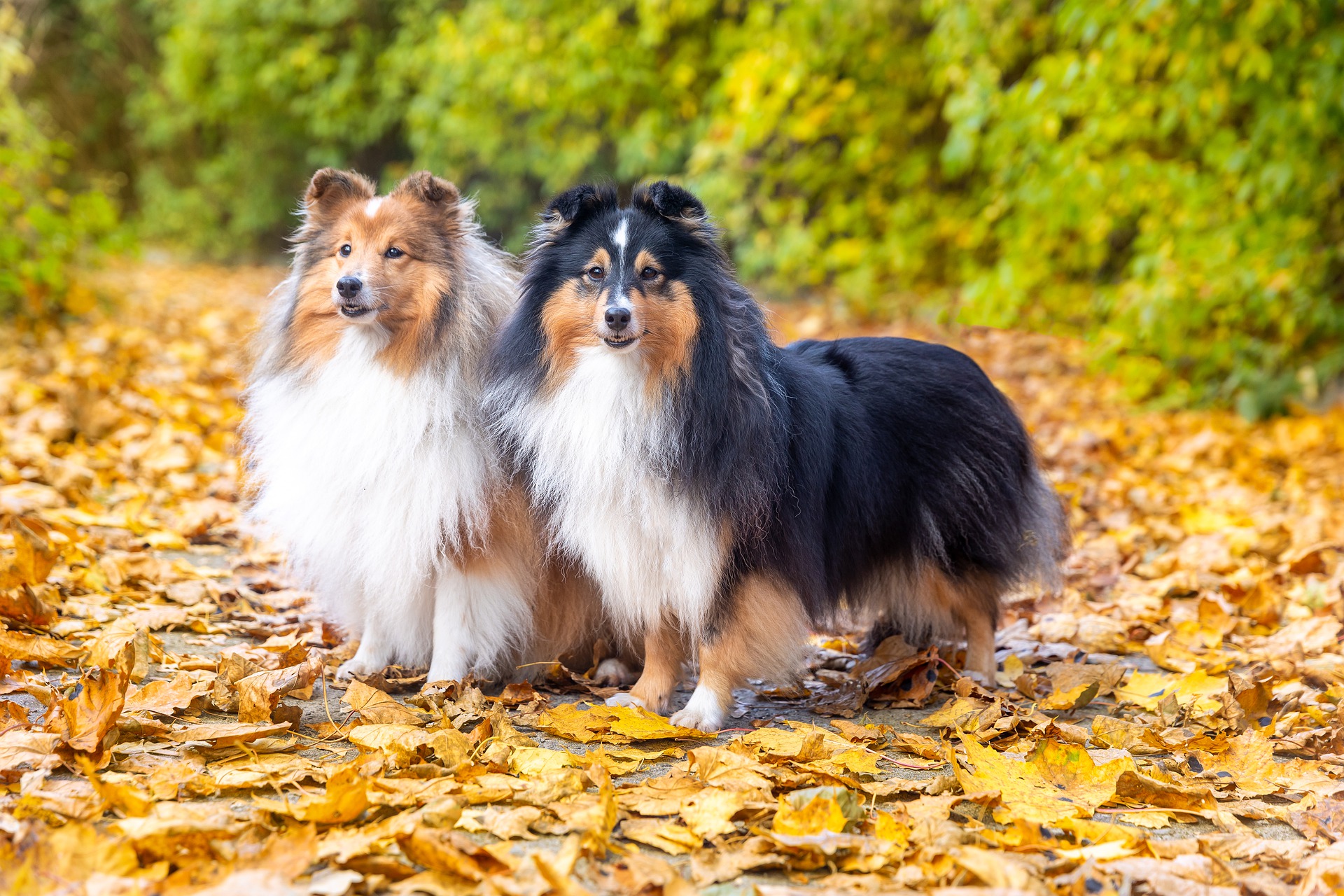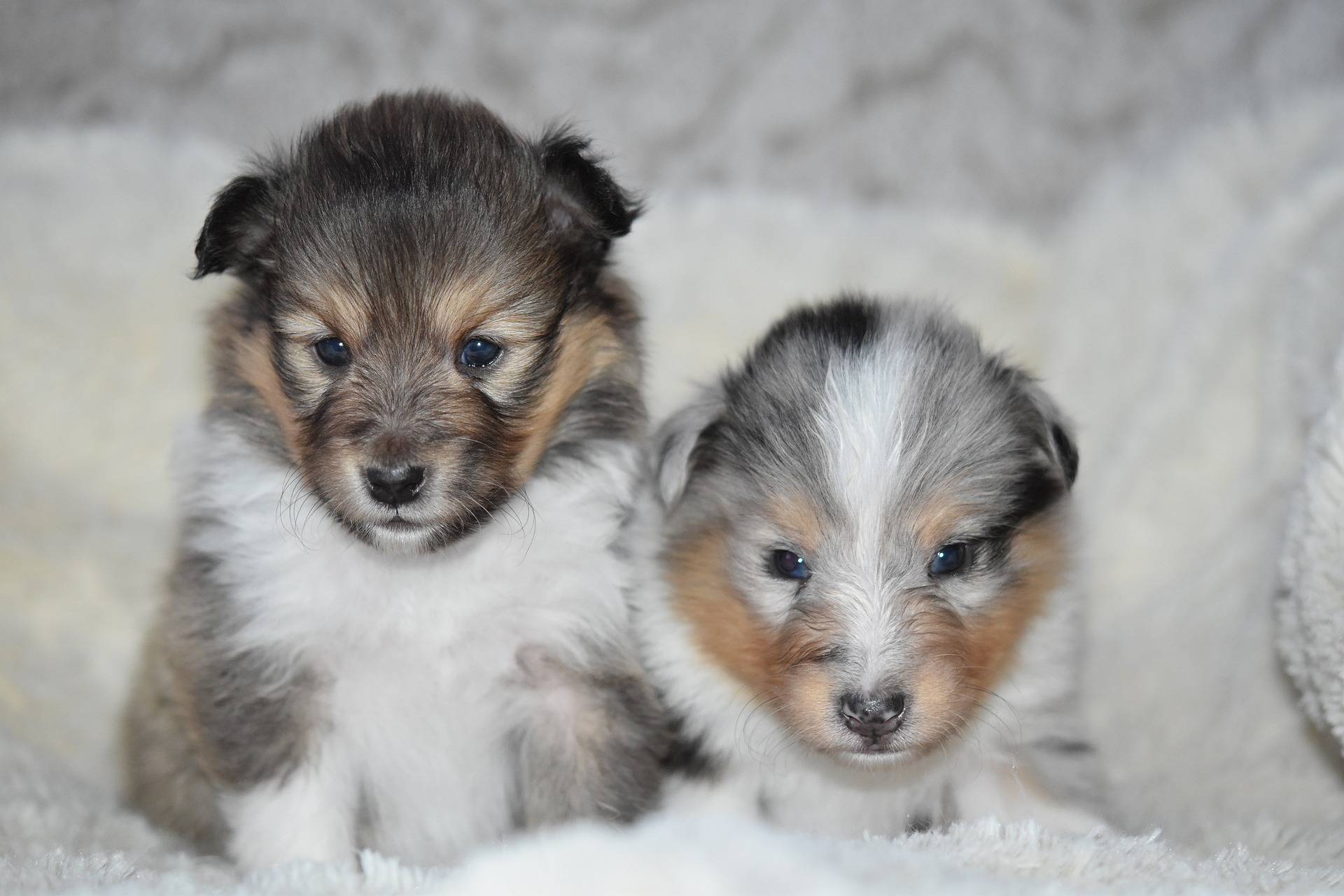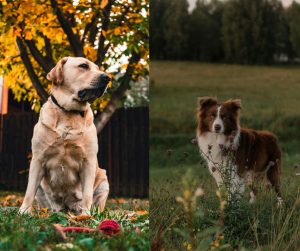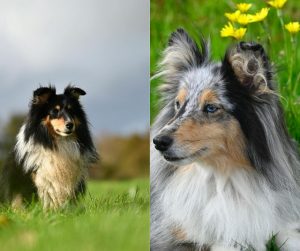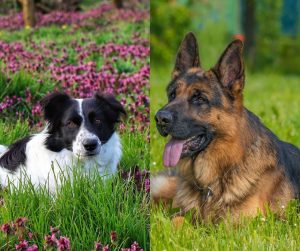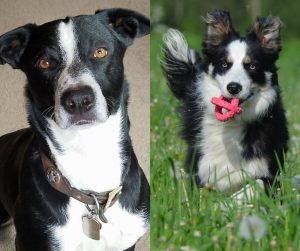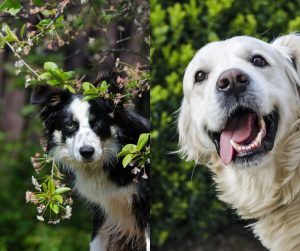When exploring the differences between the Border Collie and the Shetland Sheepdog, it is essential to understand not just their distinct appearances but also the separate roles they have been bred to fill.
Originating in the British Isles, both breeds are celebrated for their intelligence and herding capabilities. However, their history has led to differences in size, coat, and temperament that are crucial for prospective owners to consider.
The physical contrast between the two is immediately obvious; Border Collies are larger, typically weighing between 30 to 45 pounds, while the compact Shetland Sheepdog ranges from 15 to 25 pounds.
While both have lush double coats, the Border Collie’s fur can be either short or long, compared to the uniformly long coat of a Sheltie. Such characteristics impact not only their appearance but also their care and grooming needs.
Living with a herding breed means catering to their high energy levels and sharp minds.
Border Collies, known for their stamina and work ethic, may require more rigorous exercise and mental challenges. Shelties, while also active and intelligent, tend to be a bit less intense.
Their smaller stature makes them somewhat more adaptable to various living situations. Choosing the right breed hinges on aligning their distinctive attributes with your lifestyle.
Let’s take a look at the Border Collie vs Shetland Sheepdog dog breed comparison.
Key Takeaways
- Border Collies and Shelties are both intelligent herding breeds with different physical characteristics
- They require an engaged owner who can meet their exercise and mental stimulation needs
- Understanding each breed’s unique traits helps in making an informed decision when choosing a pet
Origins and History
When exploring the rich tapestry of canine lineage, the distinct histories of the Border Collie and the Shetland Sheepdog shine light on their unique characteristics.
Born from the rolling hills of Britain, each breed carries a legacy intertwined with pastoral life and human companionship.
Border Collie Origins
The Border Collie dog breed hails from the borderlands between Scotland and England, with a heritage deeply rooted in herding livestock, especially sheep.
They are celebrated for their intelligence, agility, and keen herding instincts, often described as having an intense gaze, or “eye,” with which they control flocks.
It’s in these rugged landscapes of the British Isles that these diligent workers refined the herding techniques they’re renowned for today.
Shetland Sheepdog Origins
Contrastingly, Shetland Sheepdogs, affectionately known as ‘Shelties,’ trace their ancestry back to the remote and rugged Shetland Islands of Scotland.
Initially bred smaller for the harsh island conditions, they resemble their larger cousin, the Rough Collie.
Their history on these islands crafted a breed that is intelligent, vocal, and eager to please, making them trustworthy companions for islanders managing smaller livestock.
Both popular dog breeds are recognized by the American Kennel Club as part of the herding dog group.
Physical Characteristics
When choosing between the vivacious Border Collie vs Shetland Sheepdog, physical characteristics are often a deciding factor for prospective pet owners. Let’s break down what sets these two breeds apart in terms of size, coat, and distinctive features. The breed standard is set by the American Kennel Club.
Size and Weight
Border Collie:
- Size: Males typically stand between 19-22 inches at the shoulder, while females range from 18-21 inches
- Weight: On average, they weigh between 30-45 pounds
Shetland Sheepdog:
- Size: Males and females usually range from 13-16 inches at the shoulder
- Weight: They tend to be lighter, weighing in at around 15-25 pounds
Coat and Colors
Both breeds boast beautiful, medium-length coats, perfect for petting, but they come with some differences:
Border Collie:
- Coat: Their coat is generally thicker and coarser, often requiring regular grooming to maintain its health
- Colors: They can be seen sporting a variety of colors, with the most common being black and white, tri-color, and red and white
Shetland Sheepdog:
- Coat: Shelties have a softer and silkier coat, which gives them a shimmering, elegant appearance
- Colors: Like their Border Collie cousins, they offer a range of colors, including sable, black and white, and blue merle
Distinctive Features
A dog’s ears, muzzle, and overall appearance can really highlight their personality:
Border Collie:
- Ears: Typically semi-erect with a portion flopping over, giving them a sharp, alert expression
- Muzzle: A distinct, tapered muzzle, perfect for giving affectionate nuzzles
Shetland Sheepdog:
- Ears: Their ears are small and generally set high on the head, folding back in a gentle curve
- Muzzle: Shelties sport a shorter, more refined muzzle, giving them a gentle, approachable look
Temperament and Personality
When deciding between a Border Collie and a Shetland Sheepdog, it’s important to understand their unique temperaments and personalities. They’re both intelligent and affectionate breeds with a clear herding heritage, but they channel their energy differently.
Border Collie Temperament
Border Collies are workhorses among herding dogs, known for their remarkable intelligence and dedication.
They possess a high energy level, demanding ample exercise and mental challenges. This intensity underlines their desire to work and please their owners.
With a strong prey drive, they may chase after moving objects, which is part of their herding instinct. Despite their energy, they are loyal and affectionate with family members, and they can be protective without being aggressive.
Shetland Sheepdog Personality
Shetland Sheepdogs, or Shelties as they are affectionately known, are friendly and gentle—brilliant companions for families.
They balance their herding instincts with a loyal and affectionate nature.
Shelties tend to be a bit reserved around strangers which comes from their protective instincts.
Although they share a similar energy level with Border Collies, Shelties may express it with frequent vocalizations, making them more prone to barking. They are highly intelligent and thrive in an environment that offers love and stimulation.
Exercise and Training Needs
When comparing the exercise and training needs of Border Collies and Shetland Sheepdogs, they both require ample physical activity and mental engagement, but there are nuances to their training approaches and overall energy levels.
Activity Requirements
Border Collies: They have a high energy level and need between 60 to 90 minutes of activity each day.
Vigorous exercises like running, fetching, and herding simulations are vital to keep them physically satisfied.
- Shetland Sheepdogs: Slightly less intense, these dogs still thrive on 45 to 60 minutes of daily activity
- They benefit from engaging play sessions and brisk walks
Trainability and Intelligence
Both breeds are highly intelligent, with a reputation for being easier to train and eager to please.
They excel in obedience training, with their smarts allowing them to pick up commands quickly.
- Border Collies: Known for their exceptional intelligence, they can be incredibly responsive to obedience training
- Shetland Sheepdogs: They are also sharp learners and respond positively to commands, making the dog training process smoother
Training Techniques
Due to their intelligence, both breeds respond best to positive reinforcement—rewards like treats, praise, and play make training sessions enjoyable and effective.
- Mental Stimulation: It’s crucial to keep their training sessions interesting as they both require mental stimulation to prevent boredom
- Repetition: While repetition is necessary to instill commands, providing a variety of exercises is important to prevent them from becoming disinterested
Health and Lifespan
When it comes to our furry friends, their well-being and the time we get to spend with them are precious. Let’s delve into the specifics of what health concerns these breeds might face and how long we can expect them to be part of our families.
Common Health Issues
Shetland Sheepdog:
- Often healthy, but watch for hip dysplasia, a condition that can lead to arthritis or lameness
- Eye anomalies like Collie eye anomaly (CEA) can occur
Border Collie:
- Also prone to hip dysplasia
- May face eye conditions such as progressive retinal atrophy (PRA)
Life Expectancy
Shetland Sheepdog:
- Average lifespan: 12-13 years. They cherish long walks as much as snuggles on the couch
Border Collie:
- A bit longer lived, with an expected lifespan of 10-17 years. Their boundless energy keeps them young at heart!
Care and Grooming
When it comes to caring for Shetland Sheepdogs and Border Collies, knowing the breed-specific needs is essential for maintaining their health and happiness.
From their luscious coats requiring regular upkeep to their spirited energy levels demanding ample exercise, here are some key care pointers.
Grooming Basics
Both breeds have long hair that sheds and tangles, so they’ll need regular grooming. Shetland Sheepdogs have a softer and silkier coat, while Border Collies have a denser, coarser one.
- Shetland Sheepdog:
- Brushing: 2-3 times a week
- Occasional trimming around the feet and ears
- Border Collie:
- Brushing: Several times a week to prevent tangles
- Some may need occasional trimming, depending on their coat growth
Exercise and Mental Stimulation
These dogs have high energy levels and thrive on both physical exercise and mental stimulation.
- Shetland Sheepdog:
- Daily walks or runs, paired with games like fetch
- Puzzle toys work well for engaging their minds
- Border Collie:
- Intense exercise sessions, such as agility training or herding tasks
- Training exercises target their high intellect and work ethic
Diet and Nutrition
Their diets should have a variety of nutrients to support their active lifestyle and maintain their coat.
- Shetland Sheepdog:
- Smaller portions fitting their size
- Balanced diet rich in omega fatty acids for coat health
- Border Collie:
- Larger portions can be justified by their higher energy expenditure
- Nutrient-dense food that supports their rigorous exercise needs
Living with a Herding Breed
When you bring a herding breed into your home, you’re inviting an intelligent and energetic companion into your life. These dogs thrive on companionship and have a built-in urge to herd, which can present unique challenges and rewards in a family setting.
Family Compatibility
Herding breeds like the Border Collie and Shetland Sheepdog fit well with active families. They mesh best with households that can provide plenty of space and time for exercise and mental engagement. While these breeds can be wonderful with children, their herding instinct might kick in, leading them to gently herd young kids as they would sheep. So, families must train their dogs early on to channel their herding behaviors appropriately.
- Exercise Needs: Daily vigorous exercise is a must
- Training: Consistent, positive reinforcement training methods work best
- Family Activities: Involve your dog in family activities to satiate their need for companionship
Behavior with Other Animals
Border Collies and Shetland Sheepdogs have instincts to herd other animals as well. They usually get along with cats and other family pets if introduced properly and socialized from a young age. However, care should be taken that they don’t overwhelm other pets with their enthusiasm to herd.
- Introductions: Supervised and gradual introductions to other animals are key
- Socialization: Regular, positive interactions with a variety of animals help foster good manners
- Monitoring: Keep an eye on playtime to ensure it doesn’t turn into a herding session
Choosing the Right Breed for You
When deciding whether a Border Collie or a Shetland Sheepdog is the right pet for you, it’s vital to assess which breed aligns best with your lifestyle and experience level. Both breeds offer abundant love and can be wonderful additions to the family, but they have distinct needs and temperaments.
Suitability for First-Time Owners
Border Collies are known for their high energy and intelligence. They thrive on having a job to do and require ample mental stimulation to prevent destructive behavior. This intensity might be overwhelming for first-time dog owners who are still learning the basics of dog training and care.
- Training Requirements: Extensive; experience in training is beneficial
- Exercise Needs: Considerable; they need vigorous daily physical activity
- Temperament: Eager to please but can be headstrong; thrive with consistent, positive training methods
In contrast, Shetland Sheepdogs, while also intelligent and energetic, are often seen as more manageable due to their smaller size and slightly less intense personalities.
- Training Requirements: Moderate; they are good at learning and eager to please, making training generally simpler
- Exercise Needs: Moderate; daily exercise is required, but they are usually less demanding than Border Collies
- Temperament: Friendly and affectionate; good with children and adaptable to various living situations, which can be easier for first-time owners
Considerations for Potential Owners
Before bringing either breed into your home, consider the following specifics to ensure that you can meet their needs:
- Lifestyle: Active individuals or families that can offer plenty of exercise and mental engagement are best suited for Border Collies. Shetland Sheepdogs can adapt to less active lifestyles but still require daily activity and interaction to be happy
- Children and Family Pet: With proper socialization, both breeds can be good with children and serve as loyal family pets. However, their herding instinct may lead to nipping at children’s heels, so supervision and training are important
- Temperament and Energy: Both breeds exhibit high levels of energy and intelligence, with the Border Collie generally being more intense
- Price and Reputable Breeder: The price for a puppy from a reputable breeder will vary; remember that the initial cost is only a fraction of the lifetime commitment, including training, feeding, and healthcare
- Purpose: Remember that each breed was developed for a specific purpose. Border Collies are bred for work and need a way to channel their drive, whereas Shetland Sheepdogs, although originally farm dogs, often adapt well to companion roles
Final Words
Size and Appearance
Border Collies are medium-sized herding dogs. They are noticeably larger and heavier, often weighing between 30 and 45 pounds. On the other hand, Shetland Sheepdogs, or Shelties, are smaller and lighter, with weights ranging from 15 to 25 pounds.
Coat Texture
Border Collies boast a thicker, coarser coat, well-suited for outdoor work. Meanwhile, Shelties have a softer, silkier coat, giving them a more delicate appearance.
Energy Levels
Both breeds are energetic and require ample exercise. Their shared herding heritage means they’re built for activity and thrive when they’re mentally and physically engaged.
| Trait | Border Collie | Shetland Sheepdog |
|---|---|---|
| Size | Medium-sized, heavier | Small-sized, lighter |
| Coat Texture | Thick and coarse | Soft and silky |
| Energy Levels | High, needs a lot of exercise | Very active, also needs exercise |
Temperament
The Border Collie exhibits a notable work ethic and intense herding instincts. Shelties, while also bred for herding, may come across as more reserved. Both dog breeds are social and crave human companionship, forming strong bonds with their owners.
Vocalization
A potential owner should be aware that both breeds have a tendency to bark. Shelties, however, are more prone to bark at stimuli, making them excellent watchdogs, while Border Collies might be more selective.

